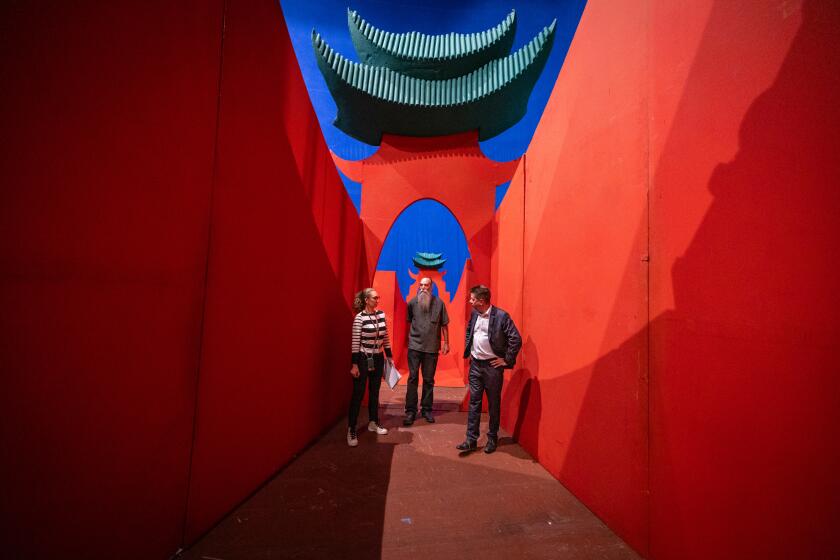L.A. Philharmonic Offers a Nice ‘Tribute’ to Hollywood
With a “Tribute to the Movies” program Monday in the Dorothy Chandler Pavilion, conductor Esa-Pekka Salonen and the Los Angeles Philharmonic put out the welcome mat, rolled the red carpet out from downtown to Hollywood--as in the studios not the place--and threw open the tent to a wider than usual Philharmonic public.
That public came in, appreciatively, and stayed even beyond the film music by Elmer Bernstein, John Williams and Bernard Herrmann to hear an electrifying performance of Stravinsky’s once-audience-terrorizing “The Rite of Spring.”
How did the Philharmonic sound? Superb.
Fresh from its successful monthlong residency in Paris, the orchestra was in top form, playing with bright zest and masterly camaraderie.
How did Salonen conduct? Seriously, thoughtfully, sensitively, with commitment and without trying to hype music designed to communicate directly and effectively. This was his first ever concert of film music.
Should the Philharmonic play movie music? That’s a thornier issue.
This was a special concert to benefit the Philharmonic Musicians Pension Fund and anything that helps the musicians should be cheered. But the Philharmonic Assn. already has established the Hollywood Bowl Orchestra, which, under the direction of John Mauceri, is specializing in this music, and so may be setting up unnecessary or unflattering comparisons.
Moreover, the music doesn’t offer a lot apart from its celluloid accompaniment. It does its job effectively; it is by no means banal or predictable. But it generally does one thing at a time, and its timing and logic are determined more extrinsically than intrinsically. A little goes a long way.
The argument that film--and therefore film music--is a particularly American art form, which also has been advanced to justify its Philharmonic inclusion, ignores and insults the genius evident in Italian, Scandinavian, German, French and British cinema from its very beginnings.
Still, it’s hard to imagine better performances of Bernstein’s music for “The Magnificent Seven,” Williams’ “Flying Theme” from “E.T.” and the various Herrmann excerpts from “The Man Who Knew Too Much,” “Psycho,” “Marnie” and “Vertigo.” Bernstein and Williams were in the audience. Herrmann died in 1975.
If the film music tended to narrow its focus to particular emotions or specific scenes, Salonen’s conception of Stravinsky’s “Rite” refined away the ballet scenario to which it was originally tied.
Salonen apparently has taken very seriously Stravinsky’s dictum that a composer can express nothing and only writes notes. The results were brilliant, transparent, multifaceted, even breathtaking, but dangerously close to pure orchestral showoff music.
It also showed how “Rite” inspired later film composers.
At a short press conference after the concert, Salonen elaborated on a project announced Monday that will go even further toward cementing relationships between the Philharmonic and Hollywood. The Philharmonic-sponsored project, in which film composers and directors will create 15- to 20-minute films to be screened while the Philharmonic plays their scores, will result in something “very close to a new art form,” Salonen said.
Each composer and director will determine the nature of the working partnership and “their mutual aesthetic,” he added. Funding is only in place for the first collaboration, due in 1998, but project producers Lyn Benjamin and Richard Kraft said “it would be found.”
More to Read
The biggest entertainment stories
Get our big stories about Hollywood, film, television, music, arts, culture and more right in your inbox as soon as they publish.
You may occasionally receive promotional content from the Los Angeles Times.






